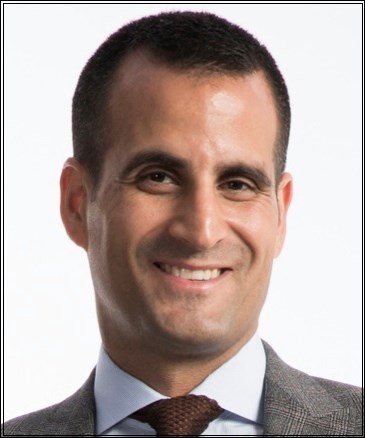Stanley Kubrick’s 1964 black comedy Dr. Strangelovesatirized the cold war, politicians, and the idea of mutually assured destruction. While it is still a genuinely funny movie, today’s viewer would have a tough time appreciating the film in the same way as those who lived through that era. The cold war era way-of-thinking is a relic of a past time. In the same way, I think that money managers 10 years from now will see the current ideas of risk management and traditional versus alternative investments as a thing of the past.
For years, portfolio managers and financial advisors have been able to construct portfolios based on a mixture of long-only equities and long-only bonds – so-called traditional asset classes. Diversification amongst these asset classes was an advisor’s primary risk management tool. By tinkering with what proportion of the overall portfolio is dedicated to each of these broad categories, risk could be effectively managed.
Mutual fund and ETF providers behaved in a similar manner, creating products that for the most part featured long-only strategies. This allowed their funds to fit nicely as the equity or bond component of an investor’s portfolio.
This approach to risk management worked because equities and fixed income were only lightly correlated, so poor performance in one asset class tended to be offset by the other, meaning that the whole was greater than the sum of the parts. Importantly, the returns an investor received from government and investment-grade bonds was so robust that in down years for equities, a portfolio still performed adequately.
Well, the days of robust yields and total returns from government and corporate bonds are over (at least for a while). U.S. 10-year Treasury bonds are yielding 2.07%1 and U.S. Treasuries are yielding less than 2.5% in nominal terms, or sub 1% in real terms2. The rates on investment-grade corporate bonds are only marginally higher than what reputable governments are paying. When adjusted for inflation, these yields are clearly unsuited to help fund the retirement of Canadian savers. And worse yet, if and when interest rates rise, the total return investors experience could be zero, or even negative on bonds. This is a far cry from the 20%* annualized return that bonds have provided us over the past 30-plus years.
The old way of thinking will not work in the future, so it is imperative that investors, advisors, and ETF providers rethink how they construct their portfolios and manage risk. It is my belief that alternatives – a misunderstood bucket of different asset classes ranging from real estate to commodities to hedged strategies – will be a large part of the changing face of risk management.
Maybe where we need to start is by changing how we discuss and describe alternatives. Since the late 1990s, it has become popular to segment portfolios according to the “Yale Model,” which split the endowment’s asset classes into equities, bonds, and also separate categories called hedge funds and alternatives – including private equity, venture capital, real estate, and other private assets. This approach incorrectly classified alternatives and hedge funds as new asset classes hoping to help build better diversification in portfolios. However, this is incorrect because often they are based on the same risk factors as equities and bonds in general, and so diversification is in fact not increased but sometimes decreased.
Intra-asset class risk management
What I believe is that we need to start thinking in terms of “intra-asset class” risk management. By that I mean instead of just trying to find different asset classes to offset risk, integrate risk management within each of the traditional asset categories. How do we construct the equity component of a portfolio so that it receives equity-like returns at a lower risk level? How about bonds, real estate, commodities, and so on?
The solution to this is to look at different risk management strategies within each of these categories. For example, within the equity component of an investor’s portfolio we have to look beyond a simple long-only approach to, for instance, a tactical hedged equity strategy that aims to provide the same rate of return with less volatility and lower risk of major loss by hedging part of the portfolio’s market risk exposure.
Using innovative strategies will be especially important for the bond component of an investor’s portfolio. A passive approach to fixed income is no longer a realistic approach unless the investor is willing to take a lower return (read: 2% vs 8%). Alternative strategies that involve active management, tactical rebalancing, and/or the use of derivatives to manage interest rate exposure and duration risk will need to become far more commonplace should investors want to achieve and maintain the returns to which they’ve become accustomed.
In the end, I believe that Canadians, advisors and fund managers will become more comfortable utilizing non-traditional asset classes and investment strategies, bringing what may be considered different into the mainstream. Maybe, in time, Canadians will even learn to love alternatives.
1. Source: http://www.bloomberg.com/markets/rates-bonds/. Data from Oct. 20, 2015.
2. Source: http://www.treasury.gov/resource-center/data-chart-center/interest-rates/Pages/Historic-Yield-Data-Visualization.aspx. Data from Oct. 19, 2015.
Courtesy Fundata Canada Inc.© 2015. Som Seif is the founder and Chief Executive Officer of Purpose Investments Inc. Securities mentioned are not guaranteed and carry risk of loss. This article is not intended as personalized investment advice,and originally appeared in the Purpose Investments blog. Used with permission.
[NOTE: CREDIT LINE MUST APPEAR AS SHOWN, WITH LINKS INCLUDED IF POSTED ONLINE.]




